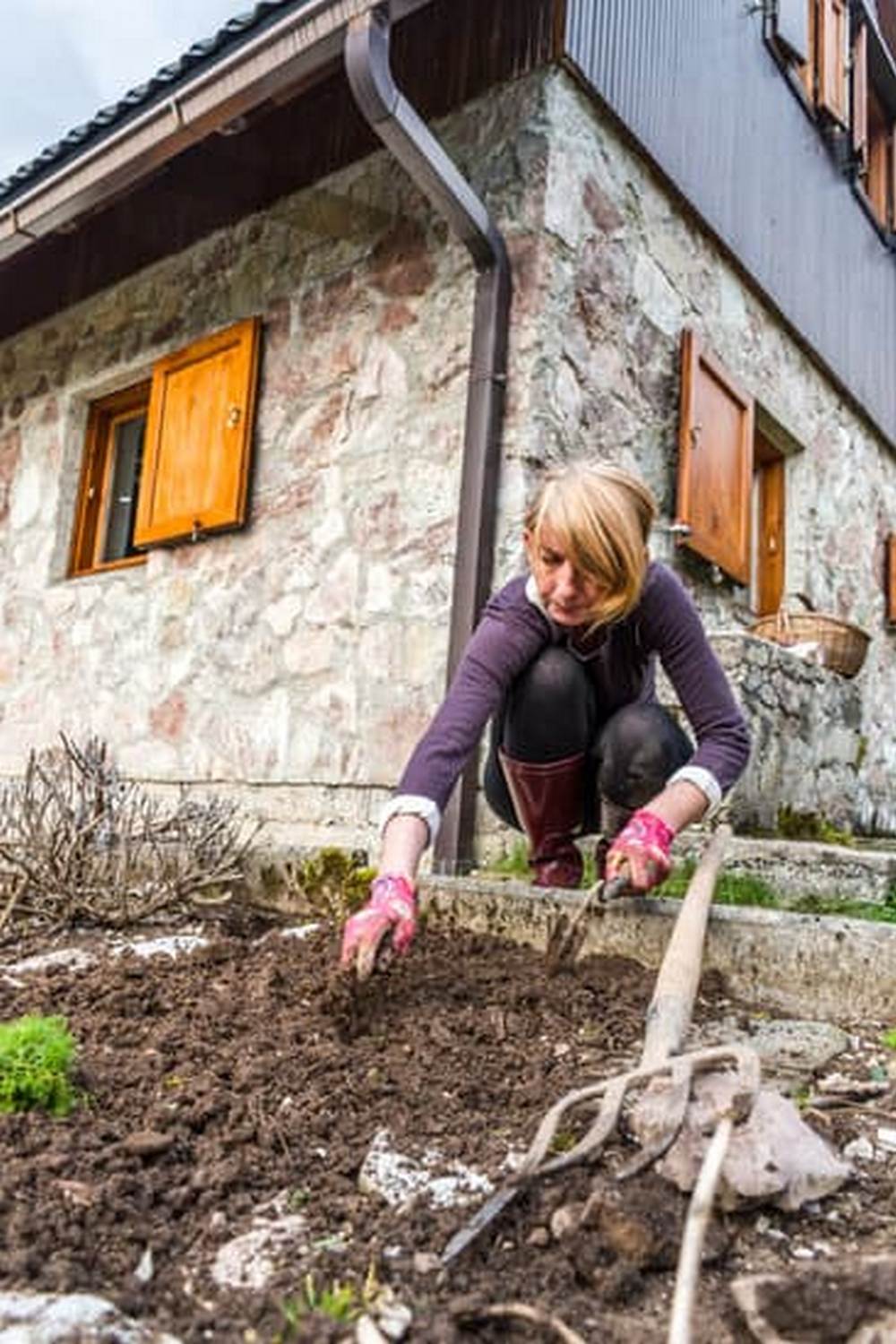Are you looking to create a thriving and harmonious vegetable garden? Understanding gardening compatible vegetables is key to achieving a successful and bountiful harvest. By choosing the right combinations of plants, you can maximize growth and health while minimizing pests and disease.
In this article, we will explore the concept of companion planting and how it can benefit your garden. We’ll also provide valuable tips for selecting the best location for your garden, as well as a guide to complementary vegetables and tips for successful companion planting in small spaces.
When it comes to gardening compatible vegetables, the key is understanding which plants work well together and which ones should be kept apart. This goes beyond simply knowing what grows well in your climate – it’s about creating a symbiotic relationship between different plant species. By strategically combining certain vegetables, you can enhance each other’s growth by providing natural pest control, improving soil fertility, and maximizing space.
In the following sections, we will delve into the intricacies of companion planting and provide insights into how certain plants thrive together. We’ll also discuss herbs and flowers that play a crucial role in companion planting, as well as share case studies of successful garden designs using this method.
Whether you have a spacious backyard or only a small balcony or patio, there are strategies for successful companion planting that can work for any gardener. So let’s roll up our sleeves and dig into the world of gardening compatible vegetables.
Choosing the Right Location for Your Garden
When it comes to gardening compatible vegetables, choosing the right location for your garden is crucial. The success of companion planting depends greatly on the environment in which it takes place. Here are some key factors to consider when selecting the location for your garden:
Sunlight and Shade
Different vegetables have varying sunlight requirements. Prior to planting, observe the amount of sunlight different areas of your garden receive throughout the day. Leafy greens, for example, thrive in partial shade, while tomatoes and peppers require full sun. Ensure that you choose a location that can accommodate the sunlight needs of all the vegetables you intend to plant.
Soil Quality
The type and quality of soil in your chosen location will also play a significant role in determining the success of your companion planting efforts. Conduct a soil test to assess its pH levels and nutrient content. Most vegetables prefer well-draining, fertile soil with a slightly acidic pH level. Amend the soil as needed to create an ideal growing environment for your gardening compatible vegetables.
Available Space
Consider the amount of space available in your chosen location and how it aligns with your gardening goals. Some combinations of companion plants require more space than others, so be mindful of this when planning your garden layout. Additionally, take into account any existing structures or obstacles that may impact the growth of your vegetables.
By carefully considering these factors when choosing the right location for your garden, you can create an optimal environment for successfully implementing companion planting with gardening compatible vegetables.
Understanding Companion Planting and Its Benefits
Companion planting is a gardening technique where different plants are grown together to help each other thrive. This method is based on the principle that some plants can benefit each other by attracting beneficial insects, repelling harmful pests, improving soil quality, and even enhancing flavor when planted in close proximity. Understanding companion planting and its benefits is essential for any gardener looking to create a well-balanced and thriving garden.
One of the key benefits of companion planting is natural pest control. For example, planting marigolds alongside tomatoes can help repel nematodes and whiteflies, while also attracting pollinators like bees and butterflies. Additionally, certain herbs such as basil, mint, and dill can deter pests like aphids, cabbage moths, and beetles when planted near vegetables such as tomatoes, cabbage, and cucumbers.
Another benefit of companion planting is improved soil health. Plants with deep root systems can help break up compacted soil, making it easier for shallow-rooted vegetables to access water and nutrients. Legumes like peas and beans have nitrogen-fixing properties that can enrich the soil with this essential nutrient, benefiting neighboring plants.
Understanding the principles of companion planting allows for a more holistic approach to gardening by promoting biodiversity and creating a balanced ecosystem. By strategically selecting gardening compatible vegetables based on their respective benefits to one another, gardeners can achieve healthier plants, higher yields, and reduced reliance on chemical pesticides and fertilizers.
Plants That Thrive Together
When it comes to gardening, choosing the right combination of vegetables to plant together can have a significant impact on the health and yield of your crops. Companion planting is the practice of growing certain types of plants in close proximity to one another for their mutual benefit. This section will provide you with a guide to complementary vegetables that thrive together, helping you create a successful and harmonious garden.
Benefits of Companion Planting
Companion planting offers several benefits to your garden. Some plants naturally repel harmful pests, while others attract beneficial insects that can help pollinate or protect your crops. Additionally, certain combinations of vegetables can improve soil quality by increasing nutrient availability and reducing the risk of disease. By understanding which vegetables complement each other, you can create a balanced ecosystem that promotes healthy growth and minimizes the need for chemical pesticides.
Examples of Complementary Vegetables
There are numerous examples of gardening compatible vegetables that thrive when planted together. For instance, planting tomatoes alongside basil can enhance the flavor and growth of both plants. Similarly, planting leafy greens like lettuce or spinach alongside taller crops like corn or beans can provide natural shade and reduce water evaporation from the soil.
Other popular combinations include carrots and onions, cucumbers and dill, as well as potatoes and peas. By strategically planning your garden layout based on complementary vegetables, you can increase overall crop productivity while maintaining a visually appealing and diverse landscape.
Tips for Successful Companion Planting
When practicing companion planting with complementary vegetables, it’s essential to consider factors such as sunlight requirements, spacing, and watering needs. Research each plant’s specific preferences before designing your garden layout to ensure that they will thrive in each other’s company.
Additionally, rotating your crops each season can disrupt pest patterns and prevent nutrient depletion in the soil. Lastly, stay observant throughout the growing season – if any pairings do not seem to be working well together, make adjustments for future plantings based on your observations.
Avoiding Incompatible Pairings
When planning your garden, it’s crucial to understand which vegetables are compatible with each other and which should be kept apart. Incompatible pairings can lead to stunted growth, poor harvests, and increased susceptibility to pests and disease. To ensure a successful garden, here is a list of vegetables that shouldn’t be planted together:
1. Potatoes and Tomatoes: Both of these plants are susceptible to similar diseases, such as blight and nematodes. Planting them together can increase the risk of these diseases spreading between the two crops.
2. Cucumbers and Potatoes: Cucumbers are sensitive to a fungus called Phytophthora infestans, which also affects potatoes. Planting them together can increase the risk of this fungus spreading between the two crops.
3. Beans and Onions: Onions release substances that can inhibit the growth of beans. It’s best to keep these two vegetables separate in the garden.
By avoiding these incompatible pairings in your garden, you can promote healthier plant growth and increase your overall harvest. It’s important to research the specific needs and characteristics of each vegetable before deciding on their placement in your garden. With careful planning and consideration of gardening compatible vegetables, you can create an abundant and thriving garden space.
The Role of Herbs and Flowers in Companion Planting
When it comes to companion planting, herbs and flowers play a crucial role in promoting the health and growth of your vegetables. Not only do they add beauty to your garden, but they also provide numerous benefits such as pest control, attracting beneficial insects, and improving soil quality. Here are some examples of gardening compatible vegetables that can benefit from the presence of herbs and flowers:
- Carrots: Planting carrots alongside fragrant herbs like rosemary or sage can help deter carrot flies.
- Tomatoes: Marigolds are known to repel nematodes that often attack tomato plants.
- Cucumbers: Nasturtiums not only add color to your garden but also deter pests such as aphids and beetles that can damage cucumber plants.
In addition to pest control, certain herbs and flowers can also enhance the flavor of neighboring vegetables. For example, planting basil near tomatoes is said to improve the flavor of the tomatoes. Similarly, chives planted near carrots not only repel carrot flies but also enhance the flavor of the carrots.
Moreover, many herbs and flowers are excellent at attracting pollinators like bees and butterflies, which are essential for the pollination of vegetable plants. This can lead to higher yields in your garden. Therefore, when planning your companion planting layout, be sure to consider the role of herbs and flowers in promoting a healthy and fruitful garden.
Tips for Successful Companion Planting in Small Spaces
When it comes to successful companion planting in small spaces, there are several tips and tricks that can help you make the most of your garden. One important factor to consider is the size of each plant. In a small space, it’s essential to choose gardening compatible vegetables that won’t overcrowd each other as they grow. For example, tall plants like tomatoes can provide shade for shorter plants like lettuce, maximizing the use of vertical space.
Another tip for successful companion planting in small spaces is to use containers or raised beds. This allows you to group together compatible vegetables and control the soil quality and drainage for each individual plant. For example, you can plant carrots alongside tomatoes in a raised bed, taking advantage of their complementary relationship while also ensuring that each plant has its own space to thrive.
Intercropping is another technique that can be beneficial when space is limited. This involves planting different types of vegetables within the same area, allowing them to work together to deter pests and maximize resources. For example, planting onions with carrots can help repel carrot flies, leading to healthier crops overall.
| Tips for Successful Companion Planting | Examples |
|---|---|
| Consider plant size and vertical space | Tomatoes providing shade for lettuce |
| Consider using containers or raised beds | Carrots alongside tomatoes in a raised bed |
| Utilize intercropping techniques | Planting onions with carrots to repel pests |
Case Studies
Companion planting is a gardening practice where different plants are grown in close proximity to each other for the benefit of one or both plants. In this section, we will explore some case studies of successful garden designs using companion planting and how it has contributed to the overall health and productivity of the garden.
One example of a successful garden design using companion planting is the Three Sisters garden, an ancient Native American tradition that involves planting corn, beans, and squash together. The corn provides support for the beans to climb, while the beans provide nitrogen to the soil, benefiting the corn and squash. The large leaves of the squash help shade the soil, reducing moisture loss and suppressing weeds. This symbiotic relationship between the three crops results in a productive and sustainable garden.
Another case study is the use of marigolds as companion plants in vegetable gardens. Marigolds are known for their ability to repel certain insect pests and nematodes, making them excellent companions for vegetables such as tomatoes, peppers, and potatoes. By incorporating marigolds into their garden design, many gardeners have reported reduced pest damage without the need for chemical pesticides.
Additionally, integrating herbs such as basil, dill, and cilantro among vegetable plants can enhance flavor, attract beneficial insects, and deter pests. For example, planting basil near tomatoes has been shown to improve tomato flavor and repel certain insects that are harmful to tomato plants.
These case studies highlight the successful integration of companion planting in vegetable gardens and demonstrate how strategic plant pairings can contribute to healthier and more productive gardens.
| Example | Benefit |
|---|---|
| Three Sisters garden | Symbiotic relationship between corn, beans, and squash results in a productive and sustainable garden. |
| Marigolds as companion plants | Repel insect pests and nematodes without chemical pesticides. |
| Integration of herbs like basil | Improves flavor of neighboring vegetables while deterring pests. |
Conclusion and Next Steps for Your Companion Planting Journey
In conclusion, gardening compatible vegetables can greatly enhance the health and productivity of your garden. By understanding the principles of companion planting and choosing the right location for your garden, you can create a thriving ecosystem within your vegetable patch. The benefits of companion planting are numerous, including better pest management, improved soil fertility, and higher yields.
As you embark on your companion planting journey, remember to refer to guides that detail which plants thrive together and which ones should be kept apart. Understanding the dynamics of plant relationships is crucial in creating a successful garden. Additionally, incorporating herbs and flowers into your garden design can further enhance the health and vigor of your vegetables.
For those with limited space, there are still plenty of options for successful companion planting in small spaces. With careful planning and strategic placement, you can maximize the benefits of companion planting even in a confined area. Finally, as you move forward with your gardening journey, consider consulting case studies or seeking advice from experienced gardeners to further refine your knowledge of companion planting techniques.
In the end, by carefully selecting compatible vegetables and implementing effective companion planting strategies, you can create a bountiful and harmonious garden that will reward you with delicious produce year after year. So take the next steps in your companion planting journey with confidence, knowing that you have a wealth of resources at your disposal to help you succeed in creating a flourishing and sustainable garden environment.
Frequently Asked Questions
What Vegetables Grow Best Together in a Garden?
Certain vegetables grow best when planted together in a garden because they can benefit from each other’s presence. For example, planting tomatoes with basil can improve the tomatoes’ flavor and repel pests. Carrots and onions also make good companions, as they can help deter certain pests and improve each other’s growth.
What Vegetables Should Not Be Planted Together?
On the other hand, some vegetables should not be planted together due to potential negative interactions. For instance, beans and onions are not good companions because onions can inhibit the growth of beans. Similarly, planting potatoes with tomatoes is not advisable as they are susceptible to similar diseases.
What Plants Grow Well Together Chart?
There are various charts available that outline which plants grow well together. These charts are based on the concept of companion planting, which takes into account how certain plants can benefit or hinder each other’s growth. These charts can serve as a helpful guide for planning a diverse and harmonious garden layout while maximizing plant health and productivity.

If you’re looking to get into vegetable gardening, or are just looking for some tips on how to make your current garden better, then you’ve come to the right place! My name is Ethel and I have been gardening for years. In this blog, I’m going to share with you some of my best tips on how to create a successful vegetable garden.





